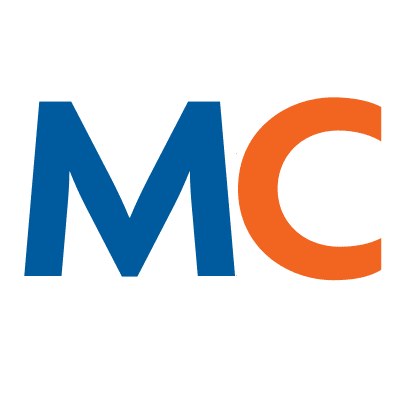- Solutions
- Solutions
- Home Health
- Hospice
- Life Plan Community
- Palliative Care
- Private Duty
- Senior Living
- Skilled Nursing
- Skilled Nursing
- Skilled Nursing Software
- Advanced Insights
- Customer relationship management
- Data and analytics
- Financial & operations management
- Marketing
- Nutrition management
- Referral management
- Regulatory compliance
- Retail management
- Resident engagement
- Revenue cycle management
- Skilled nursing interoperability
- Partners
- Blogs
- Resources
- About
- User Conference

5 Key areas to watch in home health in 2023
From the winding down of the COVID-19 public health emergency (PHE) to the expansion of HHVBP, implementation OASIS-E, and looming payment cuts, the home health industry entered 2023 bracing for transformation. Here, we discuss 5 key areas where home health providers are experiencing immense change — and how they can impact your agency for years to come.
1. Preparing for termination of the COVID-19 Public Health Emergency (PHE)
On February 10th, 2023, the Secretary of the Department of Health and Human Services (HHS) renewed the COVID-19 Public Health Emergency (PHE) for the final 90 days, confirming that the PHE will end of May 11, 2023. The end of the PHE means that any COVID-19 waivers that have not yet been terminated or are set to expire on a specific date, will continue to be in effect through that date, and then expire on May 11, 2023, unless otherwise specified by the Centers for Medicare and Medicaid Services (CMS).
The return to pre-pandemic operations will be complex for many, as the duration of the PHE has spanned over three years, and many staff may only have work experience under the PHE, thus they may not understand what a pre-pandemic state of compliance looks like. To support providers, CMS continues to update materials and provider-specific fact sheets for information about the COVID-19 PHE waivers and flexibilities on their Current Emergencies website. It is very important for home health agencies (HHAs) to continually monitor for CMS websites for updated resources, and to also identify and understand any current waivers still in use.
An example of a common waiver still in use by many HHAs is the waiver to allow skilled therapists to perform initial and comprehensive assessment for all patients, waiving the requirement that rehabilitation skilled professionals may only perform the initial and comprehensive assessment when only therapy services are ordered. As staffing issues continue to be a challenge, this waiver has continued to provide great flexibility to agencies in regard to how they schedule and staff these initial and comprehensive assessments.
So–It is very important for providers to make appropriate plans to re-establish compliance with previous health and safety standards and billing practices prior to the terminate date of the PHE.
Recommended provider considerations include:
-
- Identifying any current use of or continued need for CMS waivers under the PHE and continually monitoring the status of all federal, state/local waiver flexibilities still in use by your agency.
- Assess and monitor for any state or local waiver updates, as many states may have additional requirements or extensions to existing waivers.
- Identify any needed updates to P&P and quality review/audit systems so your agency is prepared for survey and enforcement activities.
2. Preparing for increased survey and enforcement activities
As the PHE winds down and terminates May 11th, preparation for survey and enforcement activities is a critical focus area for providers…
There has been increased growth and utilization in HH services and telehealth technology utilization during the last several years coupled with all of the PHE impacts, and now…
The planned conclusion of the PHE means there will be termination of waiver flexibilities AND survey enforcement discretion. This signals that we can expect to see increasing program integrity and oversight activities for HHAs in the field as state regional offices and accrediting organizations continue to return to more normal operations with the winding down and planned conclusion of the COVID-19 PHE.
Providers need to sort through variances between federal and state and local requirements as they focus plans on returning to pre-pandemic state of health and safety standards and billing practices, and all of these factors will greatly influence new or heightened focus areas for onsite survey activities, as the focus shifts to validating whether providers have returned to full compliance in a post-pandemic world.
Recommended provider considerations include:
-
- The focus on returning to a pre-pandemic state of compliance will include survey and audit preparedness at the agency level.
- Policies and procedures need cross-walked with the federal waiver flexibilities as they terminate… along with any applicable state and local requirements—and updated accordingly.
- Documentation oversight will be critical, as HHAs update their quality review and audit systems so that they are prepared for increased survey and enforcement activities.
- And– as skill gaps or issues are identified, alignment with agency QAPI program initiatives, infection control programs and staff competencies and training will be especially important.
3 .The reporting of home health services provided via telecommunications technology on claims
The PHE has significantly impacted how care is provided, which included demonstrating the value of delivering home health services via telehealth technologies in the home. During the course of the PHE some of the telehealth flexibilities allowed under a waiver for home health were made permanent in the CY 2021 HH final rule, allowing for services to be provided via telehealth technologies as long they do not replace needed in-person assessments and care, are included on the plan of care, and are not used for purposes of eligibility or payment, as there still is no reimbursement under Medicare for home health services provided via telehealth technologies.
While the provision of services furnished via telehealth systems is required to be included on the patient’s plan of care, CMS does not have the ability to aggregate this data from patient plans of care to determine the extent to which these services are actually being furnished…and any data collection on the utilization of telehealth in home health– has been limited to a broad category of Medicare cost report data. CMS now intends to collect this data on home health claims to allow CMS the ability to analyze the characteristics of beneficiaries utilizing services furnished remotely, and to help garner a broader understanding of the social determinants that affect who benefits most from these services, including what barriers may potentially exist for certain subsets of beneficiaries. This data may also help to inform future payment policy as it relates to the use of telehealth technologies in providing home health services.
In follow-up, CMS finalized (in the CY 2023 HH final rule) 3 new G-codes to be used for the reporting of home health services provided via telehealth technologies on claims, with voluntary reporting that started January 1st, 2023, phasing into mandatory reporting effective this summer on July 1st, 2023.
Recommended provider considerations include:
- Clinical documentation oversight in your quality review and audit systems to ensure the appropriate use and documentation of home health services provided via telehealth technologies as required in the Medicare CoPs.
- The development of billing systems or back-office audit functions to ensure all services provided via telehealth technologies are correctly reported by the appropriate G-code as a separate line item under the appropriate revenue code on your claims.
- Staff training will be very important for not only understanding the reporting requirements, but also in regard to workflow within your electronic medical records, as functionality and automation will vary by vendor.
4. The national expansion of the HHVBP model and implementation of OASIS-E
The expanded HHVBP Model began on January 1, 2022, with CY 2022 being the pre-implementation year. The first full performance year for nationally expanded HHVBP Model began January 1, 2023, and CY 2025 will be the first payment year, with payment adjustment amounts upward or downward of 5%, which will be determined on CY 2023 performance.
Performance is evaluated based on 12 approved quality measures in the expanded HHVBP model which include 5 HHCAHPS survey-based measures, 2 Medicare FFS claims based measures, and 5 OASIS-based measures— so, an accurate OASIS assessment is especially important. After delays related to the PHE, OASIS-E finally implemented on January 1, 2023, aligning with the implementation year of the nationwide expansion of the HHVBP Model, and representing some of the most significant changes to the OASIS assessment instrument in decades.
Implementation of OASIS-E also fulfilled the requirements of the IMPACT Act to increase standardization across post-acute care settings to uniformly collect health data and to enable calculation of standardized, cross-setting quality measures. Payment and outcomes will be directly impacted by the collection of OASIS data, so effective staff training and efficient quality review systems are critical for HHAs.
Recommended provider considerations include:
- Review/understand current HHVBP model measures.
- Identify skill gaps/quality areas of opportunity.
- Re-align current QAPI programs/initiatives with identified skills gaps/HHVBP measure performance opportunities.
- Ongoing Staff training and OASIS-E accuracy will continue to be important as it directly impacts both publicly reported outcomes and payment under PDGM— and now performance-based payment adjustments under the expanded HHVBP model.
5. Advocacy and legislation related to CMS’ planned home health payment cuts
Medicare law requires CMS to make permanent and temporary adjustments intended to ensure that the transition to the PDGM payment model is budget neutral in comparison to expected Medicare spending under the old payment model. CMS’ analysis of the impact of the new PDGM payment model implemented in 2020, was finalized at a -7.85% permanent payment adjustment in the CY 2023 HH final rule under their budget neutrality methodology.
While CMS has decided to implement only half of the full permanent adjustment in 2023, it does not negate the fact that the difference will need to be accounted for in future rulemaking, in addition to another $2 billion in estimated overpayments to HHAs in CYs 2020 and 2021 that will also need to be addressed through CMS’ temporary adjustment authority in future rulemaking.
There are, however, new requirements under section 4142 of the Consolidated Appropriations Act of 2023 which was signed into law December 29th, 2022, that are intended to increase transparency for home health payments under the Medicare program and requires CMS to provide publicly available information on the simulation of 60-day episodes under the Medicare home health prospective payment system in effect prior to the implementation of PDGM, in addition to making data available and using public forums to engage with home health stakeholders on the Medicare home health payment rate development.
Recommended provider considerations include:
-
- Advocacy through state and national associations.
- Engagement in public forums that CMS is required to hold.
- Thoughtful strategic planning initiatives that address staffing challenges, rising costs for labor, transportation and supplies, and other ongoing increased expenses and operational challenges related to the lengthy COVID-19 public health emergency.
- Recruitment/retention
- Quality
- Technology
Curious how your HHA can continuously stay prepared for these industry changes? Schedule a demo to see how MatrixCare simplifies these four areas, preparing agencies for positive impacts in 2023 and beyond.
Request a demo today for a closer look at MatrixCare.
See what MatrixCare can do for you
Brandy Shifteh
Brandy Shifteh, RN, BHSA, MBA, joined MatrixCare in April of 2018 as a Clinical Informatics Business Analyst, where she has been very involved in the development and enhancement of clinical analytics that supports scrubbing of OASIS assessment data, casemix/HIPPS scoring, clinical assessment reviews and coding. In April of 2019, she transitioned into a Regulations Compliance role, where she is responsible for monitoring regulations that impact home health, hospice and private duty home care, to help ensure our solutions support all existing and new regulations. She is very plugged into the regulatory community with relationships at both the state and federal level and serves as an active member on the National Government Services (NGS) Vendor Coalition group, where she provides input on MAC provider education and materials. Brandy is a Registered Nurse and comes to us with over 23 years of operations management experience in the home health, hospice and private duty home care sector, inclusive of accreditation/survey preparedness, compliance and clinical/quality improvement programming. She holds two undergraduate degrees; science and nursing and health services administration; and an MBA in computer information systems (CIS).
Related Posts

See MatrixCare in action
Start by having a call with one of our experts to see our platform in action.
MatrixCare offers industry-leading software solutions. Thousands of facility-based and home-based care organizations trust us to help them improve efficiency and provide exceptional care.






